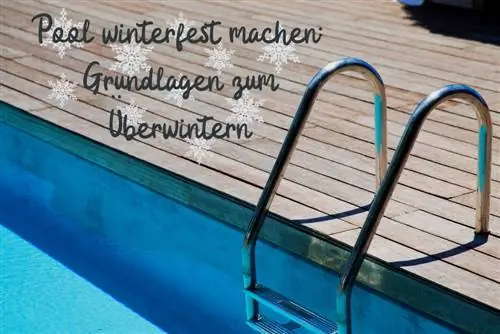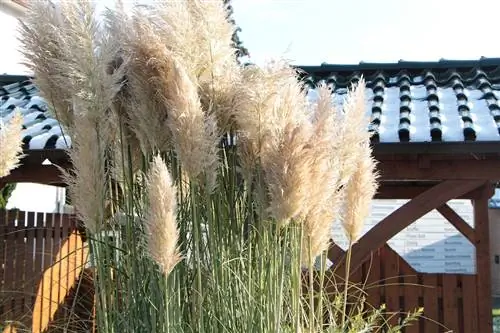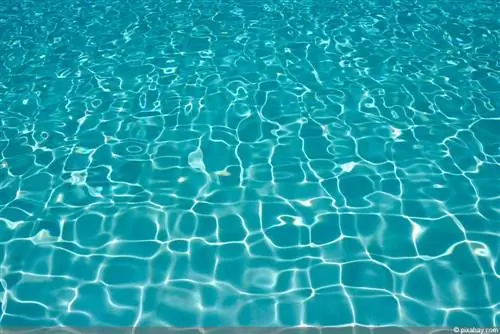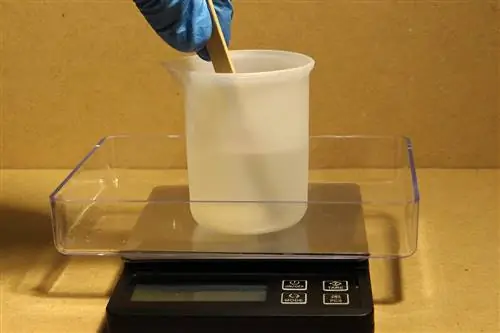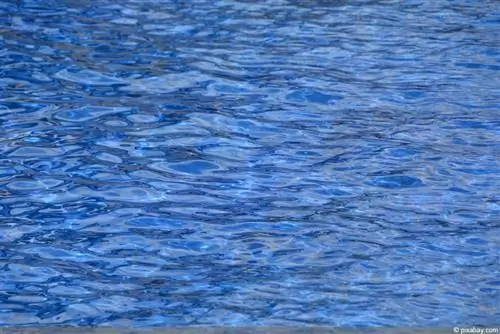- Author admin [email protected].
- Public 2023-12-17 03:39.
- Last modified 2025-01-24 12:45.
In summer a pool brings coolness and fun, but how can you winterize the pool so that you can enjoy it next year?
Time
The very first question is probably when is the right time to prepare the pool for winter. When you decide to end your pool season ultimately depends on you. The only important thing is that you lay the foundations for wintering before the first frost. Even temporary sub-zero temperatures can cause exactly the damage that you want to avoid by winterizing your pool.
Cleaning
The first priority is cleaning your pool. Because dirt can build up stubbornly over the winter. As a result, surfaces may become difficult to clean next spring. In addition, contamination leads to faster aging and even damage to materials and technology. Therefore, include the following cleaning tasks in your winter preparations:
- Fish off leaves and other coarse particles
- Degrease, clean and remove rust from stainless steel surfaces (railings, steps, etc.)
- Clean pool walls with cleaner and broom/pool sponge
- If available: Have the pool robot run again
- Restart the filter system for water purification
- Backwash the sand filter thoroughly and remove dirt
ATTENTION:
Make sure the cleaning work is carried out in the correct order. Cleaning the pool walls, for example, can introduce dirt back into the water. Stainless steel cleaners, on the other hand, can dirty pool liners. Therefore, follow the specified order of cleaning work.
Pool water
Once the cleaning is complete, now take care of the pool water. In general, a pool is usually winterized with water. However, you should adjust the parameters of the water for wintering and also change the water level to suit the circumstances.
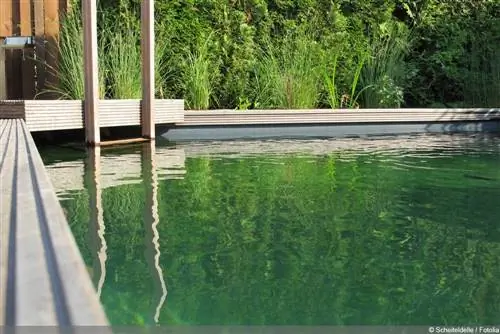
Tip:
First adjust the water quality and then lower the water level. You will then use small additional amounts of pool chemicals for pool water that is drained later. However, you can use the pool technology completely to change the water quality.
Water chemistry
In order to winter optimally, your pool water has different parameters than in summer operation. On the one hand, the burden of skin oil, sunscreen, etc. is no longer present. On the other hand, the added chemicals decompose much more slowly at lower temperatures and in the absence of sunlight. Lastly, less chemicals also means less stress on the pool components. The ideal water values for winter look like this:
- pH value between 7.0 and 7.2
- Chlorine content maximum 0.5 mg/l
When adjusting the values, proceed in the same way as you do in summer. If there is too little chlorine, be sure to avoid shock chlorination! Because in winter the initial peak value only decreases slowly. In addition, chlorine residues that are not completely dissolved can cause damage to the pool liner within a short period of time.
Water level
Now it's time to adjust the water level. Proceed as follows:
Ideally, the water level should be as high as possible to protect the pool walls from the weather and dirt
But:
- Lower the water level to 10 centimeters below the skimmer (then put the winter plug on the inlet nozzles)
- Or: without winter plug, lowering to below the inlet nozzle
To lower the water level, you can either use a conventional submersible pump or switch your sand filter system to “backwash”. To do this, connect a suction hose to your skimmer and drain the water through the filter system. With this procedure you also have the advantage that your sand filter will be cleaned again before the winter.
Technology
Once all the basics have been covered with cleaning and adjusting the water level, turn to the technology. Your filter system has already been backwashed as part of the cleaning and is therefore already clean. The pipes were also freed of dirt through the backwashing process and general water circulation. By lowering the water level, the inlets and outlets are exposed and the pipes run empty. Now check the existing access to the water-conducting technology and remove any remaining water with a sponge or vacuum cleaner. Especially in the sand filter, standing water can freeze at temperatures below zero and burst the filter container. If you have a splash water tank, empty this too. Finally, all technical components should be clean and empty. Regardless of whether pipes are exposed or remain below the water level, they should always be closed with winter plugs. This will prevent dirt from entering or even animals looking for winter quarters.
Dismantling and covering
Finally, the general remaining work follows, with which you can prepare the foundations for successful wintering:
- If necessary, dismantle components that are not winter-proof (e.g. mobile pumps, countercurrent systems, etc.) and store them in a frost-proof place
- Remove and store pool ladders and other mobile components
- Attach ice pressure pads to the pool walls to reduce ice pressure when pool water freezes or place them in the middle of the pool
- Cover the basin completely to avoid dirt entry
Control instead of trust

Although modern pool covers are very durable, you should not leave your pool completely unattended. Wind, rain, ice and snow can cause covers to slip, become damaged or even “just” sink into the pool water. The consequences are dirt in the pool or a changed water level. Some pool covers are inflatable: these are cheap to buy and reliable, but can also “let air” when temperatures fluctuate higher, i.e. at lower temperatures, air contracts and the cover may no longer lie correctly. Make regular, e.g. weekly, checks a routine. Then spring can come without any unpleasant surprises.
To the point
- Thorough cleaning helps prevent damage
- Adapted water values protect pool liners from unnecessary stress
- A lowered water level protects pool walls and technology equally
- All components that are not winter-proof should be dismantled and stored
- Covers and regular checks maintain optimal condition throughout the cold season
Frequently asked questions
The first frost is here and I haven't winterized my pool yet. What should I do?
If your swimming pool is covered with ice, wait until it disappears. Otherwise, ice can get into the technology and cause damage. You can support defrosting by heating the pool, for example by adding tap water that is well above 0 degrees Celsius.
During a check, I noticed that the water level in the pool had risen significantly due to a slipped cover. How do I behave?
First of all, lower the level back to the correct level using a submersible pump. Remove the winter plugs on the pipes to drain any water that may have entered. Then close the plugs again and repair the pool cover. If you notice leaves, branches or other coarse debris in the pool, fish them off too.
The sand in the sand filter is already quite used up. Should I replace it before or after hibernation?
When you change the sand depends on your preferences. However, the argument in favor of replacing it after the winter is that possible problems at the pool could already contaminate the fresh sand over the winter months.

